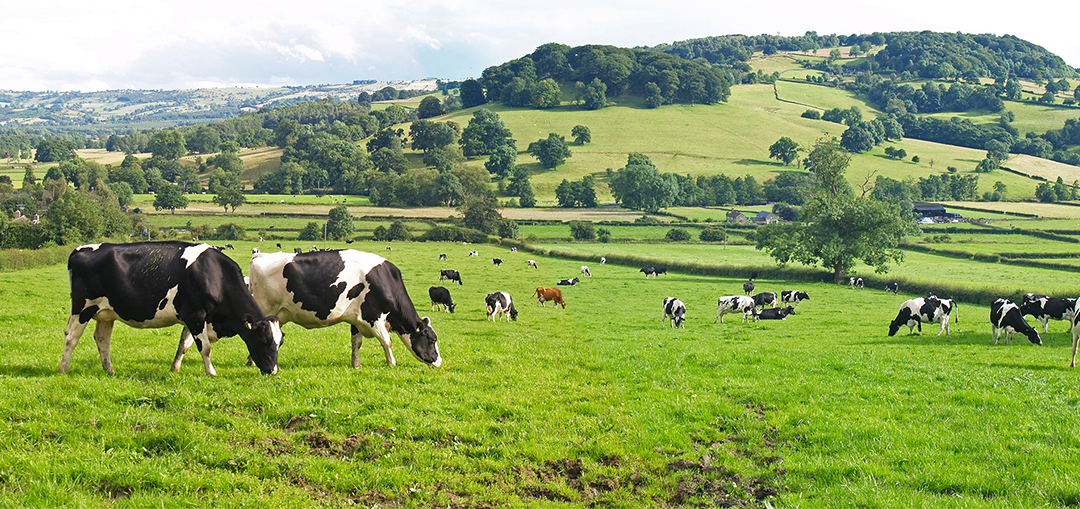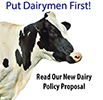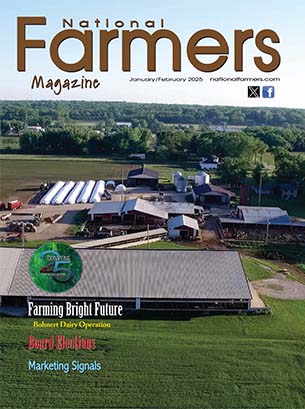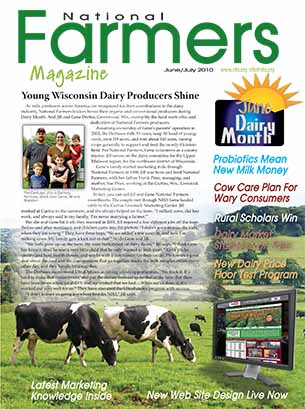On Dec. 6, I attended the Iowa State Dairy Association annual meeting in Ames, Iowa. I listened to Tom Vilsack, the president and CEO of the U.S. Dairy Export Council, talk about the nation’s milk markets.
He said the U.S. has greatly expanded our dairy export markets the past 20 years, from about $1 billion to $5 billion dollars annually.
But, in the past few years our dairy exports have plateaued at about 15 percent of total milk volume.
Vilsack said he believes the Dairy Export Council can grow exports another five percent in the next five years.
That would go a long way toward relieving the surplus milk supply in the country, but dairymen can’t wait five more years. They need help right now.
That’s why I took the podium to talk about a milk supply and structure management program that could provide some assistance much sooner.
National Farmers Two-Tier system approach would address the fact that there is a large disparity in production costs between very large and small dairy farms. This matters, because smaller farms cannot withstand low prices as long as larger farms can.
At the Iowa State Dairy Association meeting, I proposed that a Two-Tier price system be administered on a national basis. The Tier One price would be higher for milk produced up to a certain number of pounds per month. The Tier Two price would apply to production over that amount.
The way things work now, Federal Milk Marketing Orders price milk without regard to the size of the farm producing that milk. But, our program would be different.
Once the program is operational, Tier One and Tier Two prices and production levels will be determined. If markets are tight and the overall milk price in the market is elevated, then both the Tier One and Tier Two prices can be relatively high.
On the other hand, if current market conditions such as battered trade and falling demand for fluid milk persist, setting the Tier Two price will become more difficult.
I received some positive feedback from the dairy producers at the meeting. It made me very aware of just how much a new pricing system is needed, because many other producers are thinking that milk pricing must change in America.
Vilsack said since 2003, nearly half of the increase in milk produced in this country has gone to markets beyond our borders. He said population gains and middle-class expansion in emerging markets will continue to drive global dairy consumption at a faster pace than domestic dairy industries can match.
That is good news, but here at home, dairy producers are under severe financial stress, and have been for the last four years. We need to provide relief here at home more quickly than emerging markets can solidify.
I look forward to seeing you at Convene ’19 at the Sheraton Hotel in West Des Moines, Iowa, March 11.
OFFICE LOCATION
528 Billy Sunday Road
Suite 100
Ames, IA 50010
OFFICE LOCATION
528 Billy Sunday Road
Suite 100
Ames, IA 50010
PHONE
800.247.2110
PHONE
800.247.2110










